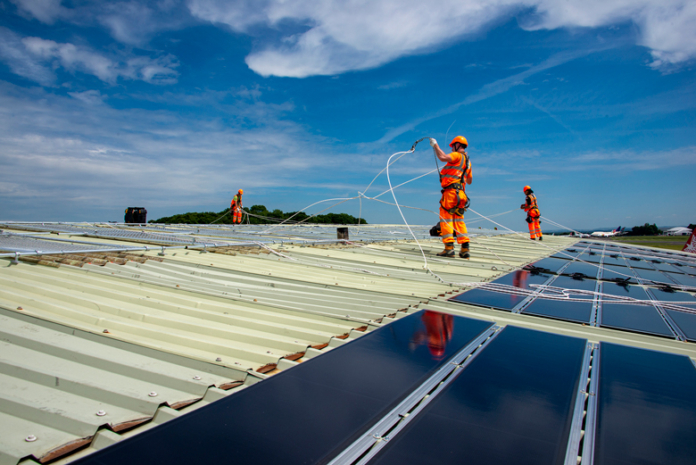Faced with rising energy prices, sustainability targets, and ageing infrastructure, many businesses are no longer asking if they should transition to solar power – but when. Should investment happen now, or is it wiser to wait for better incentives, technological advancements, or infrastructure upgrades?
Ciaran Cotter, Head of Technical at Solivus, explores when to invest in solar and what key factors should guide that decision.
The future energy task is a complex one, especially for industry. On the one hand, there is the issue of maintaining business as usual and supporting new growth, while seeking to reduce operational costs and offset rising energy cost pressures.
At the same time, there is a pressing need to lessen environmental impact. As the UK’s net zero trajectory comes closer into sight, we continue to see new industry standards and carbon reduction expectations for businesses to get to grips with. Additionally, stakeholders – including customers, employees, and suppliers – are increasingly aligning themselves with businesses that demonstrate clear environmental responsibility.The result is increased onus on the environmental measures which can drive efficiencies and optimise energy consumption levels while helping to futureproof.
Against this backdrop, solar power presents a clear opportunity: it enables significant carbon reductions while minimising disruption and controlling energy costs. But despite its appeal, it can sometimes be difficult for businesses to ascertain when to make the switch.
A Strategic Response to Rising Costs
In our experience the most common catalyst for solar adoption is rising energy costs. Businesses increasingly need to think tactically about grid usage and cost control. Whether triggered by increased energy demand, tariff changes, or grid constraints, strategic energy management has become a critical concern.
Take, for instance, an automaker that expands its operations with EV charging infrastructure. While a positive step toward electric mobility, it also introduces significant peak energy loads – driving up electricity bills and straining the grid. In another scenario, a company might face new utility contract terms that include higher demand charges – fees tied to peak usage rather than total consumption. These can inflate operating costs for energy-intensive operations.
In both cases, solar power- particularly when paired with battery storage- offers a way to self-generate energy, reduce grid reliance, and shield the business from volatile energy prices. It becomes a commercially sound decision, not just an environmental one.
Environmental Leadership and Business Continuity
There’s also a proactive dimension to this shift. Many businesses are now looking beyond immediate cost savings and taking decisive steps to reduce their carbon footprint as part of a broader decarbonisation strategy. For these organisations, the move to on-site renewables and smart energy systems is as much about environmental leadership as it is about operational efficiency.
Another compelling case for commercial solar can be found in business climates where an interruptible power supply is paramount. As aged grids become increasingly unreliable, deviations and other disturbances to electrical supply are more common. For a busy factory or manufacturer, the result of even a few minutes downtime can be huge in terms of the loss to productivity and revenue impact. Solar, combined with energy storage, provides a buffer – ensuring continuity of critical systems and reducing dependence on the national grid.
Choosing the Right Solar Solution
Once the case for solar is made, the next step is specifying the right solution. Structural capacity is often the first concern. As many as 40% of commercial buildings in the UK can’t support the weight of traditional solar panels. Fortunately, advancements in lightweight, ultra-thin film technology now make solar viable for buildings previously deemed unsuitable.
Scalability is another key factor. As the world moves towards future decarbonisation, it is becoming increasingly difficult for commercial and industrial users to predict what loads they may require a year from now, never mind in five years’ time when new electric fleets or new production technologies might have been added to the mix. In this vein, the ability to grow, support commercial objectives and scale up as needs increase is essential.
Digitalisation also plays a pivotal role. From system monitoring and energy optimisation to leveraging data analytics and AI, smart energy systems are transforming how businesses manage consumption and emissions. Energy storage supports this digital shift, enabling informed control of usage based on real-time insights. In this way, any solar solution should complement existing infrastructure while aligning with broader smart building ambitions.
A Strategic Imperative
The energy transition is accelerating, driven by renewable adoption and changing consumption models. While this brings complexity, it also creates a strategic opening for businesses to redefine how they generate and use power.
In this way, solar should be viewed as far more than a cost-saving measure; it’s a strategic asset. Early adopters often gain reputational advantages, better resilience against price volatility, and stronger alignment with customer and investor expectations.
The truth is, the most significant benefits from solar come with long-term use. Each year of delay represents lost savings and missed emissions reductions. So, when is the right time to invest? In short: now.
For more information please visit www.solivus.com
This article appeared in the June 2025 issue of Energy Manager magazine. Subscribe here.





